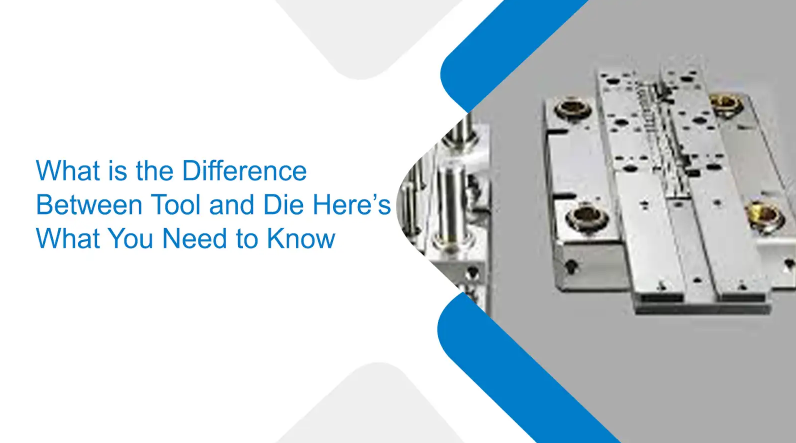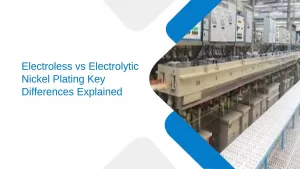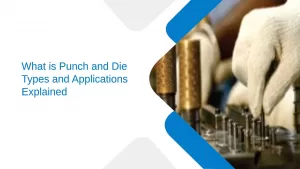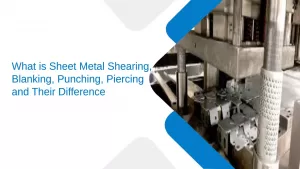What is the Difference Between Tool and Die?
- Progressive Tooling |
- Jun 11, 2025

When we hear the terms “tool” and “die” in a manufacturing context, they often sound like they belong together, and they do. But while they work hand-in-hand to shape, cut, and form materials in industrial settings, tools and dies serve distinctly different purposes.
Understanding the difference isn’t just a matter of technical jargon. Whether you’re in design, production, or procurement, knowing what each does can help you make better decisions, improve outcomes, and avoid costly errors.
What is a Tool?
In manufacturing, a tool is any device or component used to cut, shape, form, or finish a material. Think of tools as the action-makers. They apply the force or motion that transforms raw material into a product or component. Tools can range from a simple cutting blade to a precision-machined progressive tool used in high-speed production lines.
Some examples of manufacturing tools include:
- Cutting tools – drills, mills, and saws
- Forming tools – used for bending or shaping
- Punches – to create holes or indentations
- Progressive tools – advanced tools that perform multiple operations in a single press cycle
In short, tools are the components that do the work; they interact directly with the material and are essential for every part of the manufacturing process.
What is a Die?
A die is a specialised tool, but its purpose is particular: it gives shape to material, usually through cutting, stamping, forming, or extrusion. Unlike general tools that can serve multiple functions, a die is engineered for precision and repetition. It’s usually custom-made for a particular part or product.
Dies are most commonly used in:
- Sheet metal fabrication
- Injection molding
- Stamping operations
- Wire forming
The die itself is typically a stationary or fixed component, while the tool (like a punch) moves through it. The die determines the final shape of the part, guiding the material into precisely the correct dimensions.
Key Differences Between Tool and Die
While they are often mentioned together, here’s a breakdown of how tools and dies differ:
Function: Tools are used to perform specific actions like cutting, bending, or punching materials. Dies, on the other hand, are designed to shape or form materials with high accuracy, often used to create specific, repeated forms.
Movement: In most manufacturing setups, tools are the moving parts that do the work, while dies usually remain stationary. The tool applies force or motion, and the die receives or shapes the material accordingly.
Scope: The term “tool” is broad and includes any device or component that helps modify or work on a material. A “die” is a more specific kind of tool, mainly designed for forming or cutting in a precise manner.
Usage: Tools are widely used in operations like machining, forming, and cutting. Dies are more commonly seen in stamping, molding, and extrusion processes where exact shapes and forms are required.
Design: Tools can be multipurpose and reused across different jobs. In contrast, dies are often custom-built for one specific product or function, tailored to meet exact production needs.
What is Progressive Tool and Die Design?
One of the most advanced applications in manufacturing is progressive tool and die design. This approach integrates multiple operations such as cutting, bending, punching, and shaping into a single tool that works through a sequence of steps.
Here’s how it works:
- A strip of metal moves through a die station.
- Each station performs a specific task (cutting, folding, etc.).
- By the end of the sequence, a fully formed component is produced.
The advantages of progressive tools and dies are significant:
- High efficiency – multiple steps in one pass
- Lower waste – optimised material usage
- Precision – repeatability and tight tolerances
- Speed – ideal for high-volume production
This type of tooling is widely used in industries such as automotive, electronics, and appliances, as well as in any application where consistent, complex metal parts are required in large quantities.
Why This Difference Matters
If tools and dies work together so closely, does the difference matter?
Yes, and here’s why.
Understanding the distinction helps:
- Design engineers collaborate better with toolmakers
- Buyers and planners source the right components.
- Manufacturers optimise their processes and reduce downtime.
- Quality teams troubleshoot with more precision when issues arise.
Knowing when to use a forming tool versus a shaping die can directly impact your production costs, lead times, and even the lifespan of your equipment.
Choosing the Right Partner for Tool and Die Design
Whether you’re working on a new product or improving an existing line, investing in the right tool and die design is critical. The ideal partner won’t just fabricate parts—they’ll help you engineer better results.
Look for teams that:
- Specialise in progressive tool and die systems
- Use advanced CAD/CAM software for design.
- Offer in-house testing and prototyping.g
- Can scale from low-volume to high-volume production
These capabilities not only reduce error and rework but also speed up your go-to-market timeline.
Final Thoughts
Tool and die might seem like two sides of the same coin, and in many ways, they are. But understanding their roles can transform how you approach manufacturing challenges.
Tools drive the process. These shape the outcome.
Together, they form the backbone of modern production, turning raw material into reliable, repeatable, and high-quality parts.
If your business relies on precise metal components, progressive tool and die design could be your next step forward. Know the difference, and you’ll know exactly what you need.
FAQs
Q1. What is the primary function of a tool in manufacturing?
A tool is used to cut, shape, or form materials during the production process.
Q2. How does a die differ from a general tool?
A die is a specialised component that precisely shapes or cuts material, often fixed in place.
Q3. Why are tools usually the moving part, while dies are stationary?
Tools apply force or motion to the material, while dies provide a fixed shape or form.
Q4. What industries commonly use dies?
Sheet metal fabrication, stamping, injection moulding, and wire forming often use dies.
Q5. What advantages do progressive tool and die designs offer?
They increase efficiency by combining multiple operations into a single process, reducing waste, and enhancing precision.




